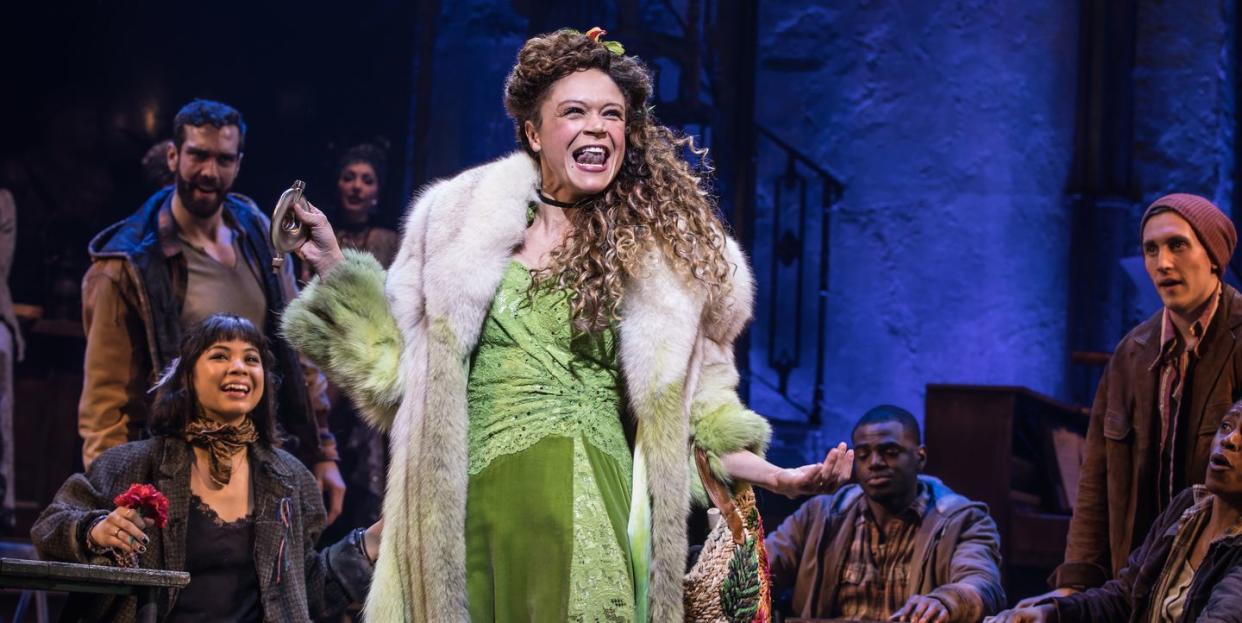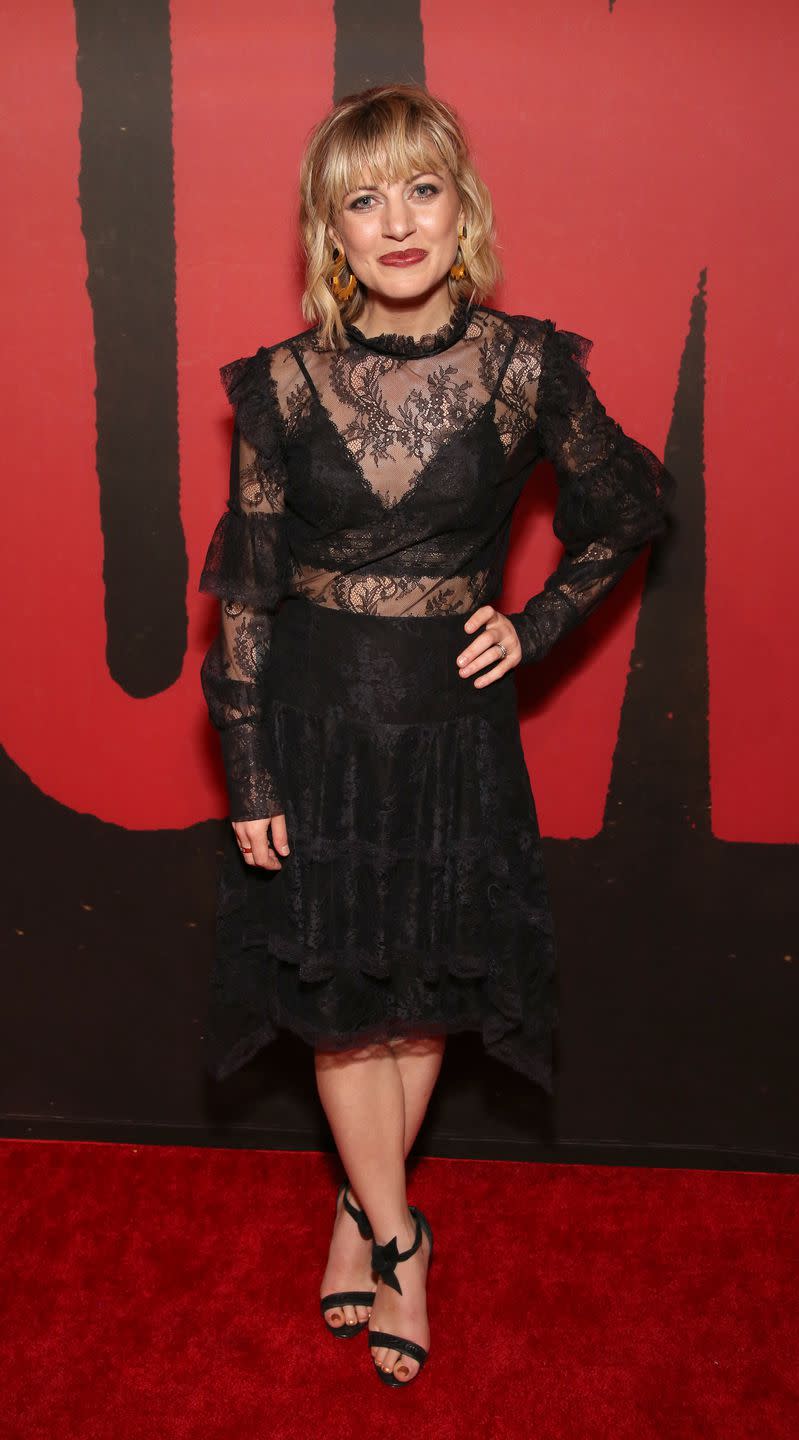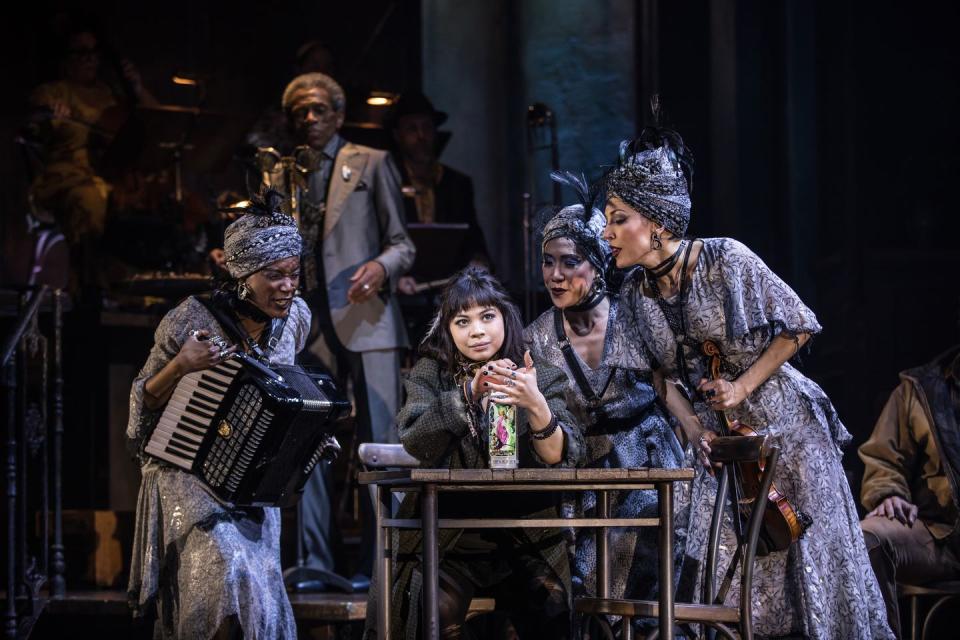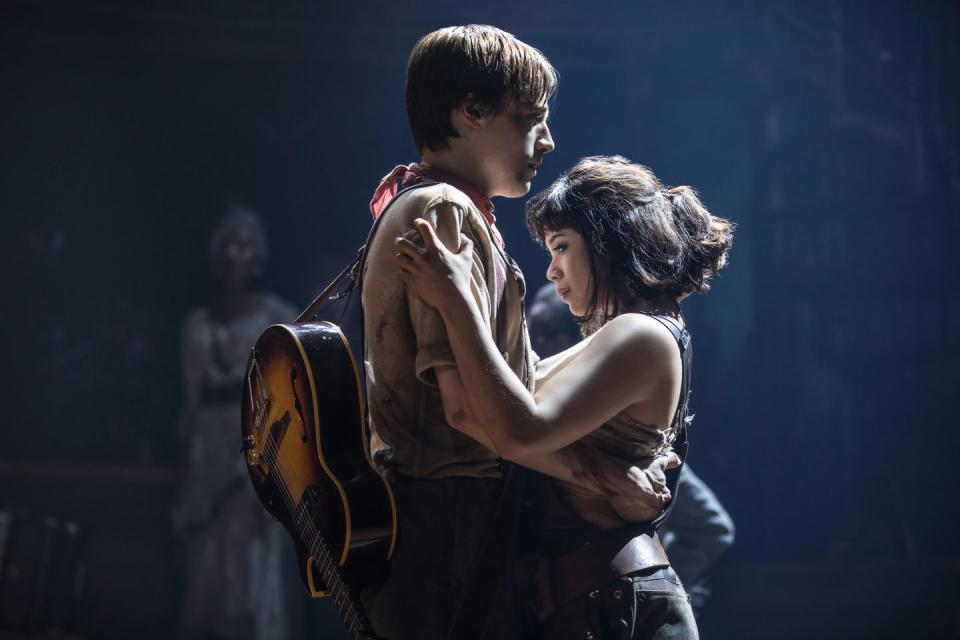Why It Took 13 Years for Hadestown to Become Broadway's Hottest Show

One of the earliest references to Orpheus-the legendary musician from Greek mythology-appeared in a poem in the sixth century B.C. More than 2,000 years later, he’s the hottest thing on Broadway.
That's because Hadestown, a new musical that follows Orpheus and his quest to bring his beloved Eurydice back from the underworld, combines that time-tested story of love, loss, and temptation with a steampunk aesthetic, a collection of touching, rousing musical numbers, and some deliciously good casting.

What began as a series of songs by writer Anaïs Mitchell is now performed at the Walter Kerr Theatre by Miss Saigon veteran Eva Noblezada as Eurydice, Reeve Carney as Orpheus, Andre De Shields as Hermes, Patrick Page as a pitch-perfect Hades, and Amber Gray as his long-suffering wife, Persephone.
The New York Times called it “sumptuous, hypnotic and somewhat hyperactive,” and the production has already started racking up awards nominations. Here, Mitchell details her 13-year journey to Broadway, her prophetic songwriting, and why her source material has appealed for more than two millennia.
I first saw a version of this show back in 2016 Off-Broadway, but that wasn’t the first incarnation. How did this show begin?
I’ve been working on this show on and off for 13 years. I stated working on it when I was in my twenties and living in Vermont. The first idea of it came a bit mysteriously; some lyrics popped into my head and they seemed to be about the myth of Orpheus and Eurydice. From there, I got excited about following the idea of the myth and exploring telling the story through song.
So, it wasn’t always a theatrical production?
The first version of the show was a do-it-yourself community theater project and all of the company was made up of friends from different bands from all around Vermont. We toured in this bus that was painted silver and played town halls and music venues, and it was a much more abstract version of the show. We did that for two years, and then I made a studio recording [of the songs], which took a few years to bring to fruition, but then we toured with that music as a concert. I always wanted to see it on stage again, and it took a while to figure that out.

This is a story that you’ve been working on for more than a decade, and it’s also based on a myth that’s centuries old. But somehow the show still feels new. What makes something this old feel vital now?
I’m inspired by traditional music and have made a few records reinterpreting old songs. What I love about images that come from centuries ago is that they make you feel less along in your time and place. There are lines from old songs that still mean something today; there’s a comfort in knowing whatever we might be going through in the present moment, someone else’s culture has experienced previously.
There’s also a song called “Why We Build the Wall,” which was written a long time ago but feels particularly timely now. Did you find a lot of those old ideas were easy to apply to modern times?
In terms of “Why We Build the Wall,” it was one of the first songs I wrote for the show, way back in Vermont. The idea was that Hades, the king of the underworld, was building a wall around his nation-state to keep out poor people. I’m normally a slow, painstaking writer but that song almost came by itself and I barely knew what it means. But it felt like it was speaking to an archetype, and I’m not the first person to write a song about a wall-look at Pink Floyd. It’s a resonant image, and people know that. It was strange to have been singing that song for 12 years, though, and to suddenly see people responding in a different way...I never expected that idea to feel new again.

A lot of the storytelling in the show is done visually, through costumes and sets and effects. Since this began as music, how did you develop the look to complement it?
I’ve been working for so long to figure out the way to visually accompany this music. And this is a show that’s different from a lot of others; we think of it more as a poem and in a way that makes it very delicate. We talk about our choices sometimes in terms of focusing a camera… Sometimes we need to bring it into focus and sometimes we want to bring it back and have a hazier view. Rachel [Chavkin, the director] has a great way of telling a story in a way that falls between a show, in a moment-to-moment way, and a rock concert. All of the characters ended up looking like they belong in a band. That made sense for a show like this, which is a musical but also comes out of a musical culture.
You’re a musician who’s found success in the theater. Are there other projects you’ve been working on as Hadestown came together?
I’ve been working on a project with other musicians. It’s a folk band called Barney Light Horseman; it’s a lot of loose, mystical interpretations of really old songs. It’s the one thing I’ve been able to work on alongside of Hadestown, which has taken so much of my attention over the years. We’ve made an album, and we’re going to play the Newport Folk Festival. After that, I’m excited just to make more music again. It’s a long time that I’ve been in the theater now, and I’m excited to write songs and not have meetings about them.
('You Might Also Like',)

